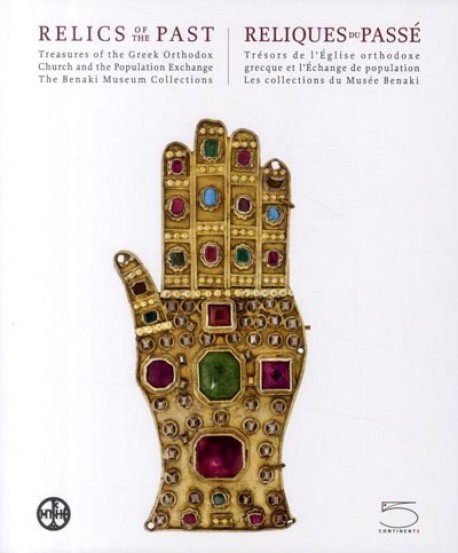No products
Product successfully added to your shopping cart
There are 0 items in your cart. There is 1 item in your cart.
Our webstore uses cookies to offer a better user experience and we consider that you are accepting their use if you keep browsing the website.

Exhibition catalogue
- New Art Books
- Exhibition catalogue
- Highlights
- Art Book Sale
- Museum's Shop & Gifts
- Bilingual art books and foreign editions
- Children's Books
- Art History
- Painting
- Architecture
- Sculpture
- Drawing & Engraving
- Photography
- Contemporary art
- Decorative Arts & Design
- Art Techniques
- Critics
- Entertainment art books
- Civilisations
- Partners Reviews

Exhibition catalogue Relics of the past, treasures of the greek orthodox church
The liturgical objects, icons and vestments presented originate in areas where medieval and later Greek culture flourished. Their provenance and inscribed dedications show the historical course of the Christian populations in the Ottoman empire.
Product not available
| Model | 9788874395750 |
| Publisher | 5 Continents |
| Format | Ouvrage broché |
| Number of pages | 230 |
| Language | Français/Anglais |
| Dimensions | 285 x 240 |
| Published | 17/02/2011 |
| Weight | 1.304 |
Exhibition calogue de l'exposition "Relics of the past, treasures of the greek orthodox church " shown at the Centre orthodoxe du patriarcat oecuménique, Chambésy, Geneva (3 February–24 July 2011)
The convention signed by Greece and Turkey in 1923 provided for the transference of movable communal property by the members of both communities. In the case of the Greek-Christian populations of Asia Minor (Anatolia), the Pontos (Black Sea) and Eastern Thrace, their movable communal property consisted of the ecclesiastical silverware, embroidery, icons, liturgical manuscripts and books that comprised the contents of the sacristies in their churches and monasteries.
In a society built on religious differentiation, church treasuries also constituted a depository of local history and communal memory. The metal-rich land of the Pontos, the Byzantine province of Cappadocia, and cosmopolitan Adrianople, the crossroads of the Balkan trade routes—these were all elements that moulded the character of the relics.
The contribution made by Constantinople/Istanbul related to the production and distribution of works of art. By the 17th century the Ottoman capital had been exposed to Western European artistic currents. For the Christian populations of the empire, the channels of communication with the West also passed through Venice and the large Greek community there. Ecclesiastical silver and other luxury wares were supplied by the workshops of the capital to both nearby and far-flung communities of the empire.
The artefacts of the refugees are a peculiar blend of Byzantine and Western Christian style created within the Ottoman cultural environment.
Anna Ballian is the senior curator at the Benaki Museum of Islamic Art in Athens, Greece.
Recently viewed items






